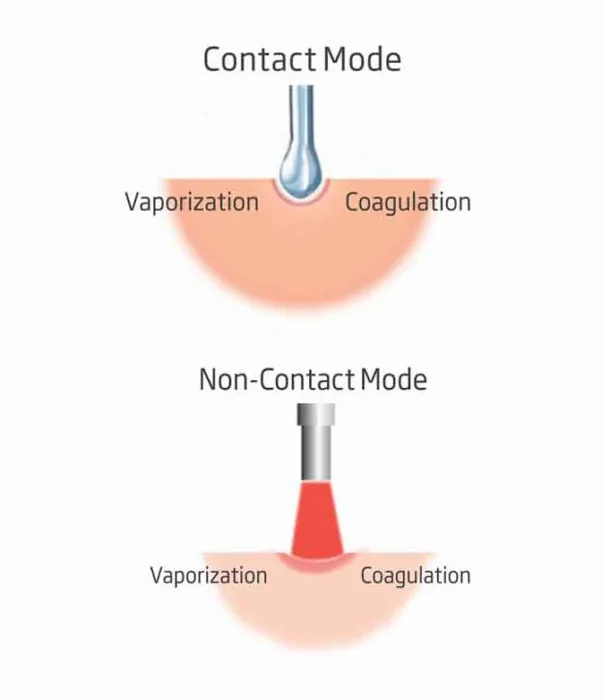Unique Laser Technology

The Lasotronix Smart M 15 W device is ideal for both contact and non-contact mode surgeries.
In the contact mode, the laser tip is in direct contact with the targeted tissue. This mode is preferable for tissue vaporization and photocoagulation. While the low power mode settings help achieve coagulation, the higher power bands help undertake vaporization.
In the non-contact or near-contact mode, the tip of the laser fiber remains at several millimeters away from the tissue and is ideal for tissue photocoagulation.
Irrespective of the modes, the Lasotronix Smart M 15 W device can be used for interstitial laser-induced thermotherapy. This is a minimally invasive method of treating both malignant and benign tumors. The laser device is placed on the holes punctured on the skin so that the local tissues can absorb the energy. This hyper thermic state causes either immediate or delayed tissue necrosis via coagulation.
Most of the cases in the clinic are handled by administering a topical anesthetic and a decongestant spray to the nasal cavity. However, the micro laryngeal surgery needs general anesthesia with special flexi-metallic tube to prevent a fire hazard.
It can be used in contact mode, in which the tip of the fiber is placed directly on the surface of the tissue. This mode is effective for both photocoagulation and vaporization of tissue, depending on the power density. At the low- or mid-power range, coagulation occurs; at a higher level, vaporization occurs.
The laser can be used in near-contact mode, in which the tip of the fiber remains several millimeters apart from the tissue. This mode is largely used for tissue photo coagulation.
The laser can be used for interstitial laser-induced thermotherapy, a minimally invasive method of treating both benign and malignant tumors. The laser is placed through puncture holes in the skin, and its energy is absorbed by local tissues. This hyperthermic state causes either immediate or delayed tissue necrosis via coagulation.
In the clinic most cases can be done after administering a topical anesthetic and a decongestant spray to the nasal cavity, but micro laryngeal surgery needs General anesthesia with special fleximetalic tube to prevent fire hazard.

